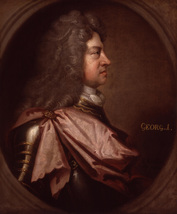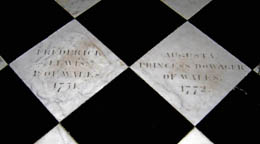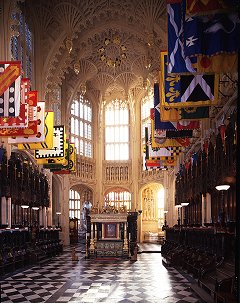HSP HISTORY Blog |
Interesting Frederick, Maryland tidbits and musings .
|
|
Place names are usually derived from an aesthetic landform or geographical feature. Others can credit an early settler or outstanding citizen. Then there are the locales that have taken their nominal cue from a national icon (such as a president, politician, or war hero) or cultural identity. Lastly, some places are called by names signifying commercial traits. Here in Frederick County we can easily account for names such as Point of Rocks, Thurmont, Burkittsville, Emmitsburg, Jefferson, Garfield, New Market LeGore and Middletown. That leads us to the question of Frederick, both city and county. Why do we have this name, and who is responsible for giving it? At the same time, are there other places out there with this name? All good questions, and looking back in history, it seems that we have a fitting name for a location that has its own special international panache, charisma, rebellious spirit and moxie. However, we may also be named for a scoundrel who suffered from the newly coined ailment of “Affluenza.” It just depends upon whose judgment you trust. Get ready for a “Cliff’s Notes®” version of British royal family history in which you will meet an individual who narrowly missed his chance to make a great impression on world affairs. His grandfather, father and son were British kings, and his great-granddaughter would take the throne at age 18 and ruled for over 63 years, a period known commonly as the Victorian Era. To start the discussion, let’s look at the name meaning of Frederick found as an entry on a website called www.behindthename.com English form of a Germanic name meaning "peaceful ruler", derived from frid "peace" and ric "ruler, power.” This name has long been common in continental Germanic-speaking regions, being borne by rulers of the Holy Roman Empire, Germany, Austria, Scandinavia, and Prussia. Notables among these rulers include the 12th-century Holy Roman Emperor and crusader Frederick I Barbarossa, the 13th-century emperor and patron of the arts Frederick II, and the 18th-century Frederick II of Prussia, known as Frederick the Great. The Normans brought the name to England in the 11th century but it quickly died out. It was reintroduced by the German House of Hanover when they inherited the British throne in 1714.  House of Hanover' arms House of Hanover' arms So what happened in 1714, and more so, what does it have to do with Frederick, Maryland? Well our storied namesake was a complex individual and lived a relatively short, and misunderstood, life. He spent 24 years as heir apparent to the British throne, but would never get his opportunity to rule. Our story can certainly pick up in 1714 with the House of Hanover, a German royal dynasty which once ruled the Duchy of Brunswick-Luneburg, the Kingdom of Hanover, the Kingdom of Great Britain, the Kingdom of Ireland, and the United Kingdom of Great Britain and Ireland. It succeeded the House of Stuart as monarchs of Great Britain and Ireland in August 1714 with King George I and held that office until the death of Queen Victoria in 1901.  King George I (1660-1727) King George I (1660-1727) King George I ascended to the throne after the death of Queen Anne (namesake of the Maryland Eastern Shore county bearing her name). This ruler’s reign was brief, 13 years, and trouble- filled as many English subjects thought he was too “German.” Apparently George helped support this notion by spending nearly 1/5 of his reign in his native homeland. He was eventually succeeded by equally “Deutsch” son, George II (1683-1760). King George II married Caroline of Ansbach and the couple would have eight children, with the first born holding the fore-mentioned “peaceful rule” moniker—Frederick Louis (or Lewis). Born February 1st, 1707, the namesake of Frederick, Maryland (city and county) is said to have suffered a lonely and neglected childhood. Frederick Louis’ father (King George II) had a similar upbringing, a victim of his own parents’ bitter divorce. George I is said to have been a cold individual who had several extramarital affairs. When his wife turned to “outside company” in order to fulfill her needs, George I called for the marriage to be dissolved. And that wasn’t the end of it as George II’s mother (Sophia Dorothea of Celle) truly got the raw end of the deal. Her suitor, a Swedish count, mysteriously disappeared (thought to have been tied up with stones and thrown into a river) before an elopement scheme could take place. Queen Sophia would be banished to her castle home back in Germany and held under house arrest for the rest of her life. Worst of all, George I gave strict orders that she was forbidden to see her children ever again. This likely resulted in “unresolved childhood issues” that would manifest in George II’s own ability to parent in the future.  Young Frederick Louis (ca. 1721) Young Frederick Louis (ca. 1721) As for Frederick Louis’ mother (Queen Caroline), she lived with the pain of being orphaned at a young age and was bounced around until becoming the ward of King Frederick I and Queen Sophia Charlotte of Prussia. So it’s easy to have compassion for our namesake, he was somewhat doomed from the start. Frederick Louis was born in Hanover, Germany and was brought up there. He was seven when his grandfather (George I) took the British throne. At this time his parents moved to Great Britain, but left young Frederick back in Germany, where he was given the title of Duke of Edinburgh— becoming the second in line for “the top spot” behind his father. Sadly, Frederick Louis would not see his parents for another 14 years, at which time he was summoned to Britain to take on his new role as Prince of Wales. Throughout that 14-year duration, George I had used Frederick Louis as a pawn against his father (George II). This certainly “primed the pump” for game playing to reach new heights when the spirited 21 year-old Frederick arrived in London in 1728. One of the best descriptions of Frederick Louis comes from noted author and historian Richard Cavendish whose articles regularly appear in History Today magazine (www.historytoday.com): "Open-handed, with an easy manner, he had a certain charm and taste for sport, gambling and women, and though his command of English was uncertain and he looked like a frog, the English on the whole approved of him. The same could not be said of his own family and the hatred between the prince and his parents was a national scandal. What the root of the antipathy really was, no one has ever been able to establish, but Frederick’s father, the king, could seldom bring himself to speak to him and told people that the prince was a changeling and no true child of his. Frederick’s mother once famously described him as ‘the greatest ass and the greatest liar and the greatest canaille and the greatest beast in the whole world’, adding ‘and I heartily wish he were out of it.’ On another occasion, catching sight of the prince from a window, she said, ‘I wish the ground would open this moment and sink the monster to the lowest hole in hell.’ She and his father both preferred Frederick’s younger brother (William), a military hero and Duke of Cumberland. The prince’s demands for more money and his father’s refusal to give it him reached such a pitch that Frederick appealed against the king to parliament, unsuccessfully, for a larger allowance. He regarded his £50,000 a year (at least £3 million/year in today’s money) as miserably inadequate. One reason the prince needed plenty of money was that he ran his own rival court. His persistent political maneuvering against his father’s principal minister, Sir Robert Walpole, was a major cause of offense. When his wife, Augusta of Saxe-Gotha, was about to bear their first child in 1737, Frederick insulted his mother by making sure that she was not present at the birth. The reason she had wanted to be there was to make quite sure that the new arrival actually was Augusta’s child. She doubted very much that it could be Frederick’s and had been telling people that he was impotent."  Daniel Dulany, the Elder (Founder of Frederick Town, Maryland) Daniel Dulany, the Elder (Founder of Frederick Town, Maryland) In 1745, Daniel Dulany the Elder (1685-1753) would strategically use the scorned Prince of Wales’ name for a fledgling town he intended to lay out on land recently obtained from fellow Annapolis land speculator/politician Benjamin Tasker. Dulany started his time in America as an indentured servant, but had studied law and amassed a fortune over a period of four decades. The visionary of Irish blood also held a number of colonial offices over his lifetime. Years earlier, in 1722, he had even written a pamphlet entitled The Right of the Inhabitants of Maryland, to the Benefit of the English Laws, asserting the rights of Marylander's over the Proprietary Government. In his current land speculation scheme, Dulany saw what was occurring in Pennsylvania as proprietor William Penn had experienced great success by “marketing” his Pennsylvania Province (and later Commonwealth) to Quaker and German immigrants looking for a new home in the Americas. The Germans, especially, were a hearty and frugal people bound by religion. They seemed the perfect solution for taming the “wild” interior lands, while also readily possessing high-end tradesman skills to serve their brethren.  Original plat of Frederick Town Original plat of Frederick Town Daniel Dulany’s desire to attract Germans to settle his town (and later county) most certainly lends credence to “Frederick” being a highly attractive name choice. Prince Frederick Louis had remained a favorite among his kinsman, and in 1745 was still heir to the throne once his father passed. Dulany was in the position to have a double victory once King Frederick became a reality. Frederick Town was laid out by 1745, and this constitutes its founding date. Three years later (December 10th, 1748) Frederick County came into being and consisted of today’s Garrett, Allegany, Washington, Montgomery, and most of Carroll counties. Dulany’s planned town became the county seat and prospered tenfold, affording the opportunity for his son Daniel Dulany, the Younger to launch his political career as a representative to the General Assembly. The prominent Annapolis lawyer and land-developer was not the first, however, to use Frederick Louis’ name. A number of other “Fredericks” had their starts in the 1720s and 1730s In 1720, a new county was created in Virginia and named Spotsylvania in tribute to the royal governor Alexander Spotswood. A port town was established eight years later on the Rappahannock River and given the name Fredericksburg. In another part of Virginia, in the Shenandoah Valley, a collection of remote settlements came together in 1738 and became Frederick Town—eventually to be renamed Winchester. The county around this town would eventually take the Frederick name as well, with its first County Court session held on November 11th, 1743. Another example to add to the list is Frederick Township in Montgomery County, Pennsylvania, a quiet countryside that received its official name and government in 1731. Here in Maryland, Prince Frederick became the new county seat of Calvert County in 1722 thanks to an Act of the Maryland General Assembly. Across the Chesapeake Bay and to the north, Fredericktown was laid out in Cecil County on December 11th, 1736. It was previously known as Pennington’s Point, named for the family of a noted Indian trader, Abraham Pennington. Pennington was the first permanent European settler to reside in what would become Frederick County in the vicinity of today’s Brunswick—in name, at least, representing another connection to Prince Frederick and the House of Hanover.  Augusta of Saxe-Gotha, wife of Prince Frederick Louis (1719-1772) Augusta of Saxe-Gotha, wife of Prince Frederick Louis (1719-1772) Let’s get back to Prince Frederick Louis. What can be said of him was that he was a decent family man. He married 16 year-old Augusta of Saxe-Gotha-Altenburg and had nine children. History records that he was a much better father to his kids than his own father had been to him. Interested in the arts, Frederick collected pictures, wrote songs and poetry, played the cello well and loved music. He was also an enthusiast for hunting, shooting and fishing, and captained the Surrey cricket team for several seasons. Unfortunately the latter could have led to his demise. In 1751, Prince Frederick allegedly suffered a blow to his chest from either a cricket ball or tennis ball, causing an abscess. Although this story may be apocryphal, Frederick Louis died of pneumonia shortly thereafter on March 31, 1751. Some historians contend that this could have been a likely complication that arose from a freak injury of the sort.  "Poor Fred" (1707-1751) "Poor Fred" (1707-1751) Sadly, Prince Frederick Louis would never claim the throne. His father died in 1760, but the heir would be George III, Frederick Louis’ eldest son. Our namesake Frederick was buried in Westminster Abbey, in the Henry VII Chapel, with a minimum of ceremony and without a single member of the royal family present. His epitaph is far better known then he is: HERE lies Fred, Who was alive and is dead. Had it been his father, I had much rather: Had it been his brother, Still better than another: Had it been his sister No one would have missed her: Had it been the whole generation, So much the better for the nation, But since ’tis only Fred, Who was alive and is dead, Why there’s no more to be said.  King George III (1738-1820) King George III (1738-1820) George III would “Rule Britannia!” through the American Revolution and War of 1812 (1760-1820). It’s interesting to ponder if the king ever ran across the name of Frederick (city or county), Maryland? We gave ample opportunities with patriotic events and personages such as the 1765 Stamp Act Repudiation, support of the people of Boston during the American Revolution blockade, the Star-Spangled Banner by Francis Scott Key, Thomas Johnson, Jr. (first elected Maryland governor), and John Hanson (president of Congress under the Articles of Confederation). Later on, during the American Civil War, the immortal line ‘the clustered spires of Frederick Town’ could have rolled off the lips of Prince Frederick Louis’s great-granddaughter, Queen Victoria. Thanks to John Greenleaf Whittier’s poem Barbara Frietchie, the town won international fame and made its way into British schools and back to Frederick Louis’ homeland of Germany because of the heritage of the poem's heroine.
0 Comments
Leave a Reply. |
AuthorChris Haugh Archives
February 2024
Categories |
Proudly powered by Weebly










 RSS Feed
RSS Feed